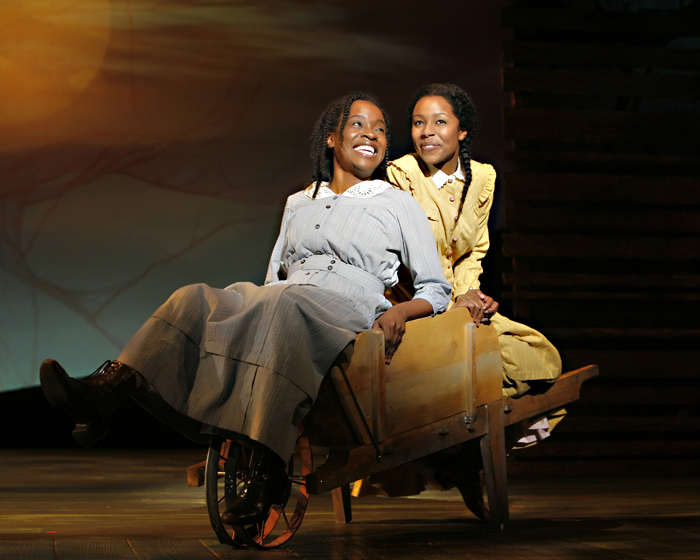The Color Purple has so many things going for it—a wrenching story, exhilarating melodies to soothe the heart and thrill the ear, and dance routines that run the gamut from holy-roller testifyin’ to Lindy-hopping throwdown. But the bus-and-truck production that opened last Tuesday night at the Paramount was an unmitigated mess, largely because the techies running the sound and light boards seemed to be watching the show for the first time just like us.
That’s a shame, really, because anticipation had been running high. The Color Purple has what media pundits call a huge “Q factor.” That means that, as with James Bond or Batman, there are very few people (especially theatergoers) who don’t have some familiarity with its story, either because they’ve read the Pulitzer Prize–winning novel by Alice Walker or because they’ve seen Stephen Spielberg’s 1985 film starring Whoopi Goldberg and Oprah Winfrey.
For anyone who missed those, The Color Purple is an emancipation tale set in Georgia during the first half of the 20th century. Walker’s central characters are Celie (the plum role that Whoopi rocked in the movie), the brassy Sofia, and the town temptress, Shug Avery. Each of them starts life in a different place, but rises above her circumstances finally to live on her own terms—not as someone’s wife, daughter, or conquest.
If there’s fault to be found in Marsha Norman’s book (adapted from Walker’s novel), it’s that the first half of the second act hurls us out of Depression-era Georgia fora side trip to visit Celie’s sister Nettie in…wait for it…Africa! It’s entirely extraneous, and looks for all the world as though Norman had decided that this would be a sweet spot to stage an infomercial promoting The Lion King. Yes, it’s all there in Walker’s source material, but to give this episode so much emphasis while there are characters we really care about under duress back in the States seems capricious at best.
Be advised, too, that there’s enough violence against women in the show to fill a special holiday edition of COPS. But Norman’s text evinces a confident momentum that keeps The Color Purple from slipping into self-pity. Likewise, the score (by Brenda Russell, Allee Willis, and Stephen Bray) does much to ameliorate the tragedies that unfold at regular intervals.
When it came time to deliver, the principals, chorus, and dancers could do no wrong. But much of the plot advances in song, and if the words were often unintelligible within spitting distance of the orchestra, then what were the patrons in the balcony hearing? The soloists’ microphones were often late in being turned on, and ensemble numbers were often reduced to mush. Lighting cues were mangled, too, with follow spots failing to follow and lights coming and going as if someone had broken into the light booth, tied up the board operator, and decided to run it himself as a prank.
Finally, with all those substitutions opening night, I began to wonder if their injury list had been reported to ESPN. As a Broadway hit hailed by critics and audiences alike, this musical hardly needs one more accolade heaped upon it. My guess is that sick leave and fumbles will abate, and when they do The Color Purple will be a much more worthwhile gamble of time and money.








